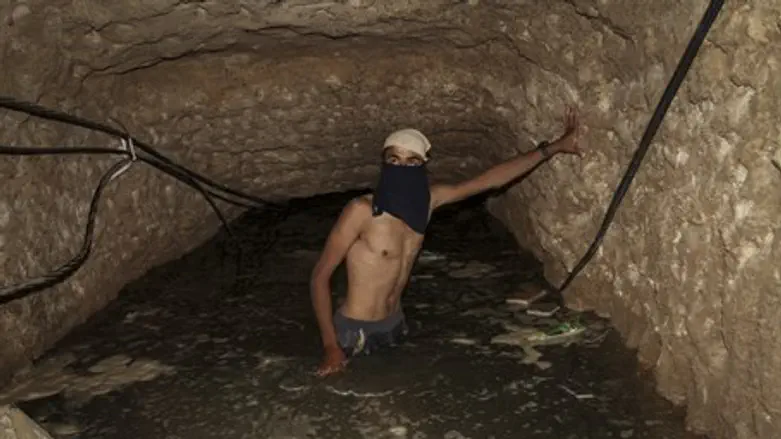
Egyptian security sources revealed on Friday that they found an iron underground attack tunnel leading from Gaza into Sinai, marking the first time that such a tunnel has been unearthed.
The find came as part of Egypt's long-standing operation that began in October 2014 to create a massive buffer zone in southern Gaza. The operation has involved occupying a large swath of land at least one kilometer deep (over half a mile) along the 14-kilometer (9-mile) border, evicting thousands of Gazans, destroying their homes and mosques, and recently even creating a border moat.
Now as part of its work destroying hundreds of smuggling tunnels, the Egyptian army came across the first iron one, which lay at a depth of ten meters (33 feet) according to Egyptian sources quoted by the Palestinian Arab Ma'an News Agency.
The tunnel was found north of the Rafiah Crossing, and was summarily detonated with massive amounts of explosives.
According to the sources, the tunnel was discovered as the army was flooding the border area with sea water. The water was not absorbed into the ground due to some sort of blockage that did not allow it to penetrate, raising the army's suspicions.
Quickly the Egyptian engineering corps dug down and found the iron tunnel, which featured iron walls at a thickness of 40 centimeter (16 inches) - a construction feat that must have been particularly expensive.
The tunnel extended roughly 200 meters (over 650 feet) into Egyptian territory, and was still in the process of being constructed. On the Gazan side of the border, the tunnel stretched 70 meters (230 feet).
Egyptian intelligence services indicate there are an estimated 17 iron tunnels from Gaza to Sinai, and they are meant for "resistance" - namely for Hamas and other terrorist organizations to attack the Egyptian buffer zone project.
The Egyptian Masrawy news portal cited senior Egyptian security sources saying Hamas has allocated large funds to construct iron tunnels, and that the funding comes from Qatar.